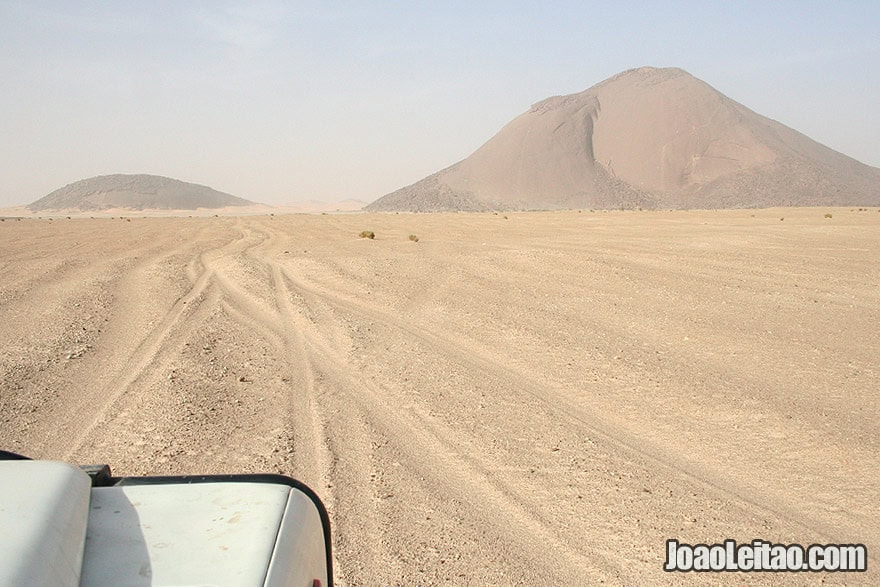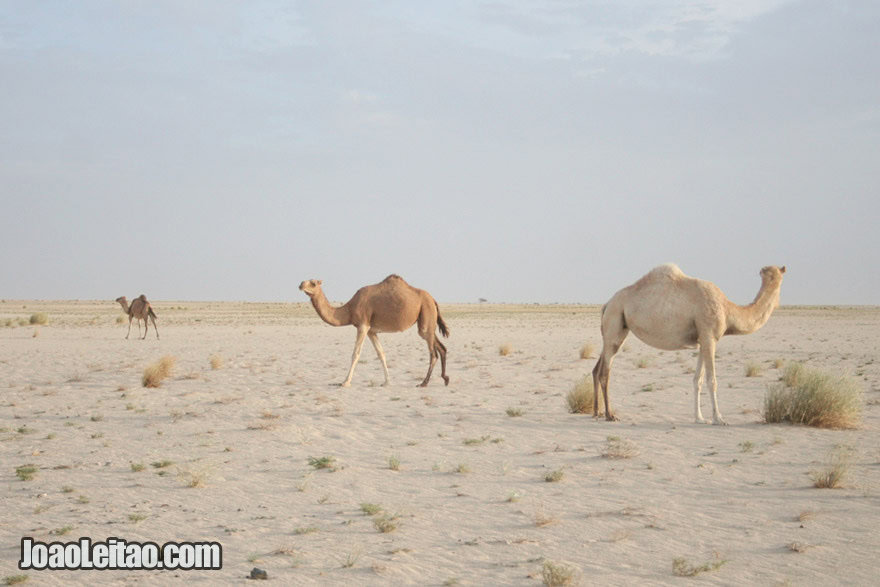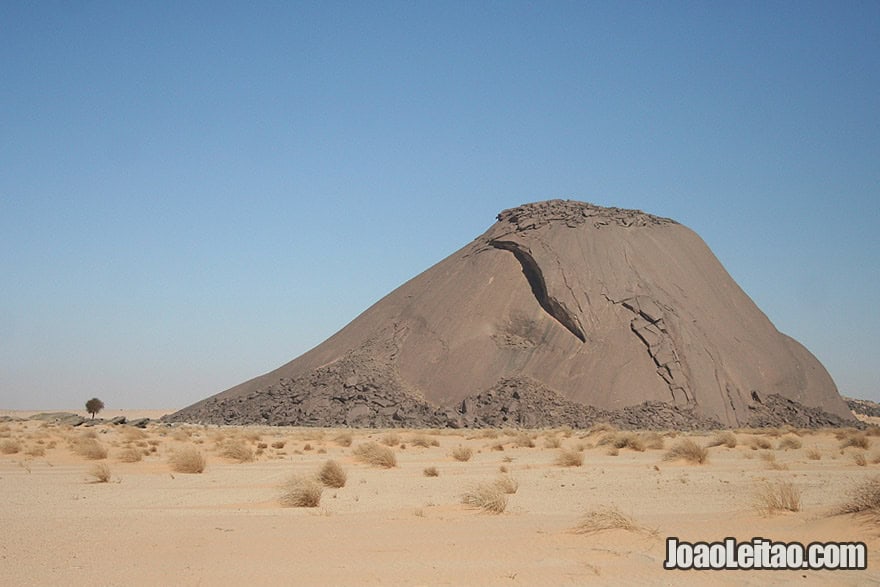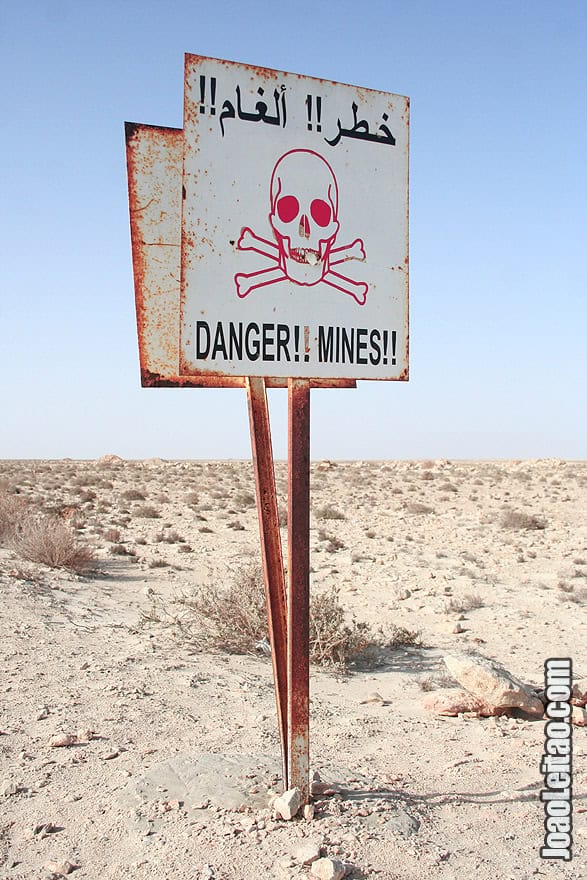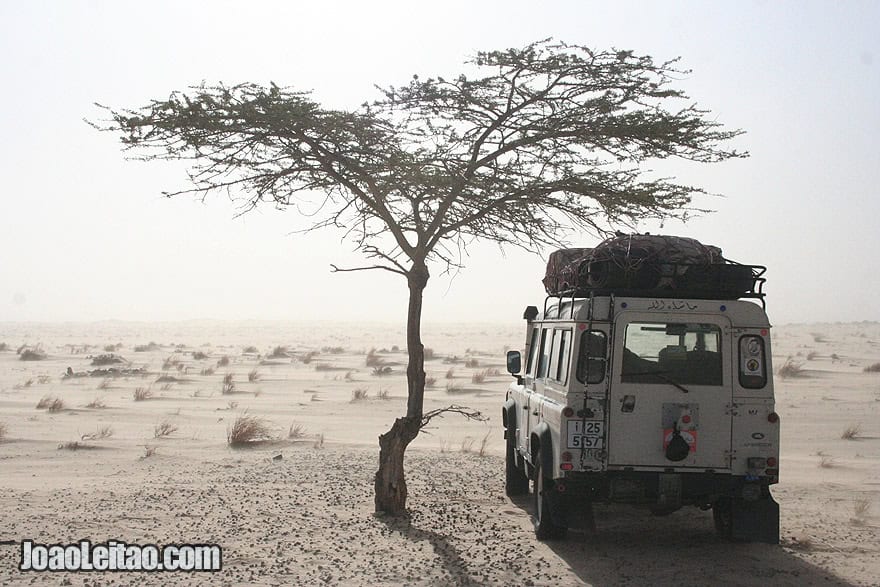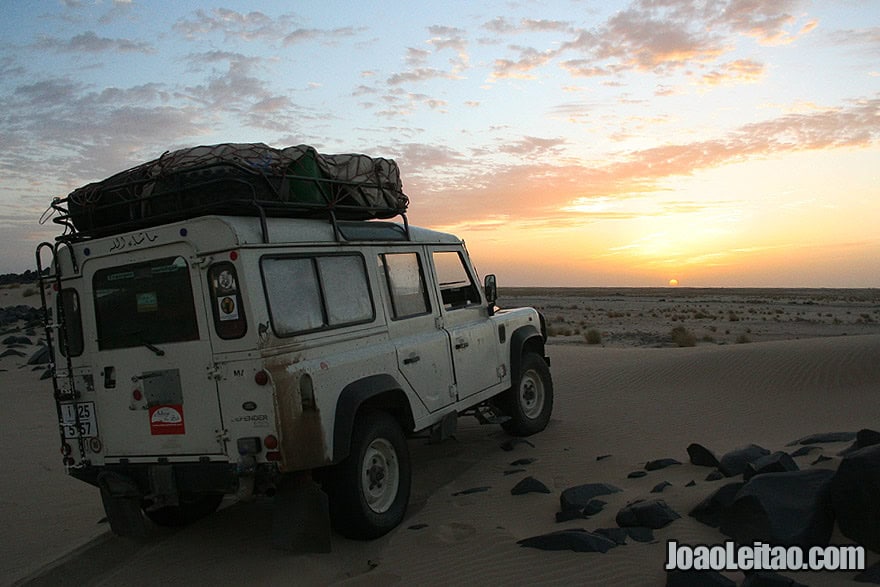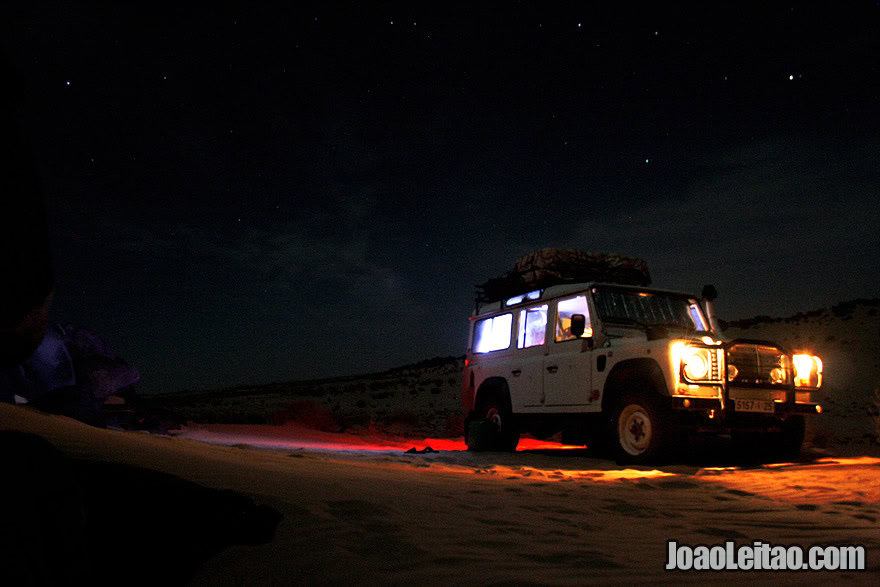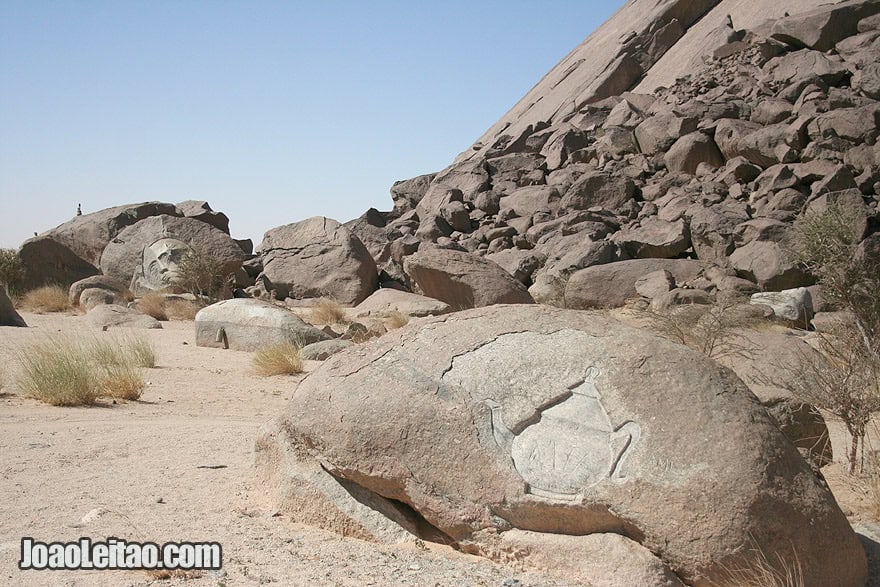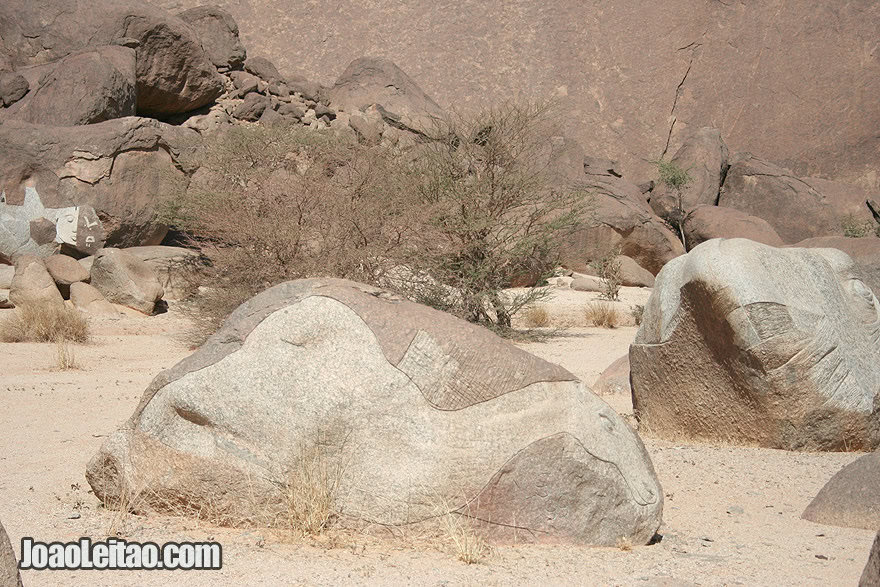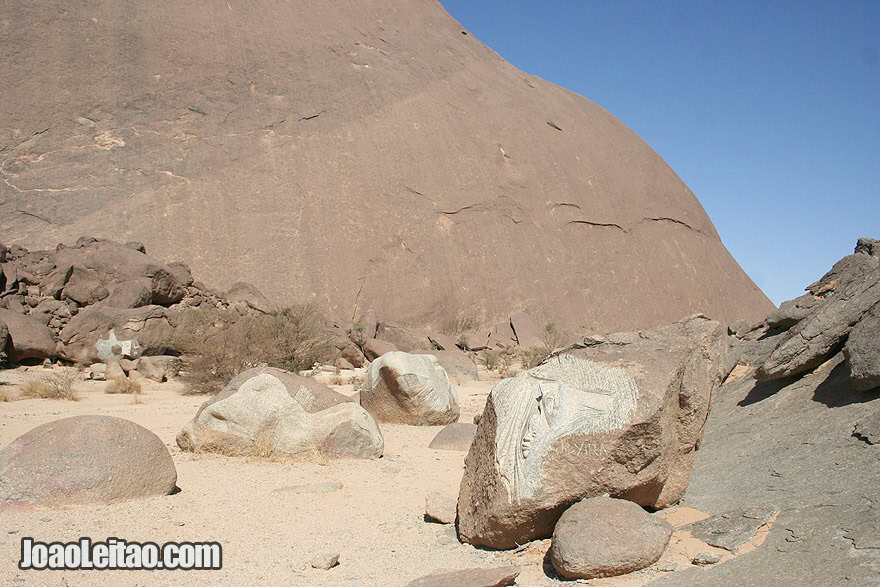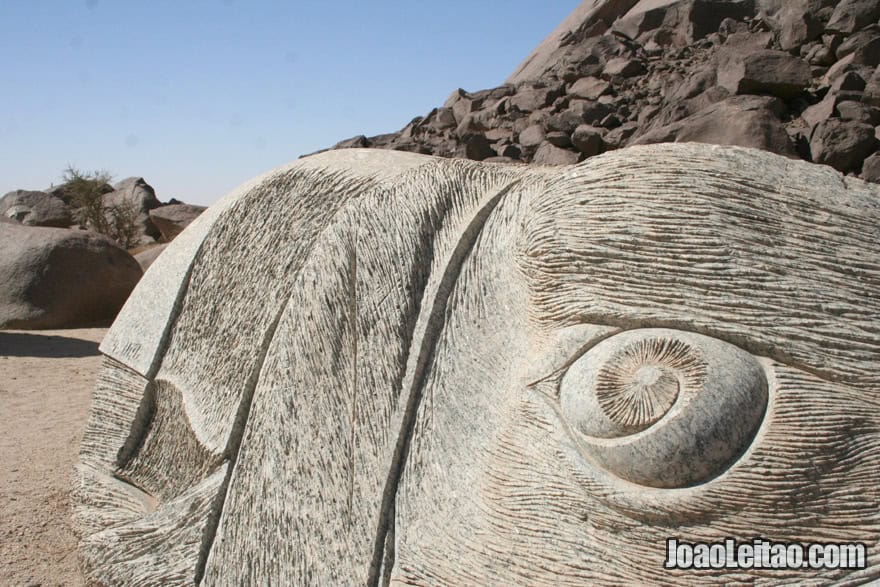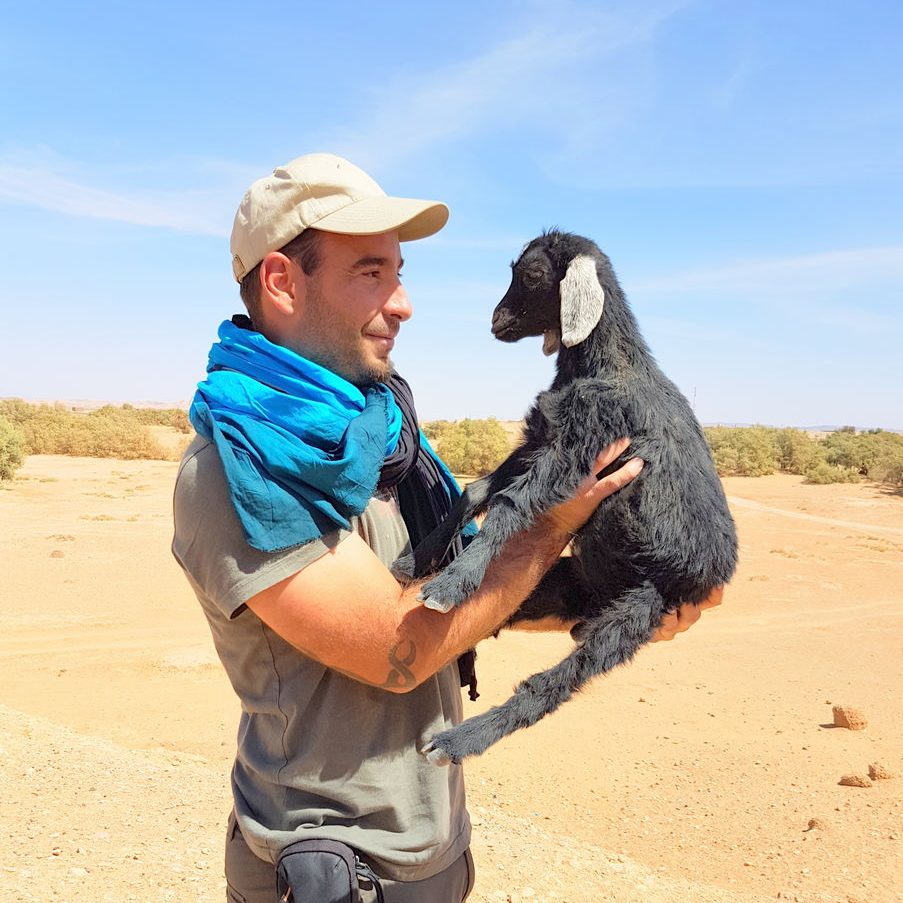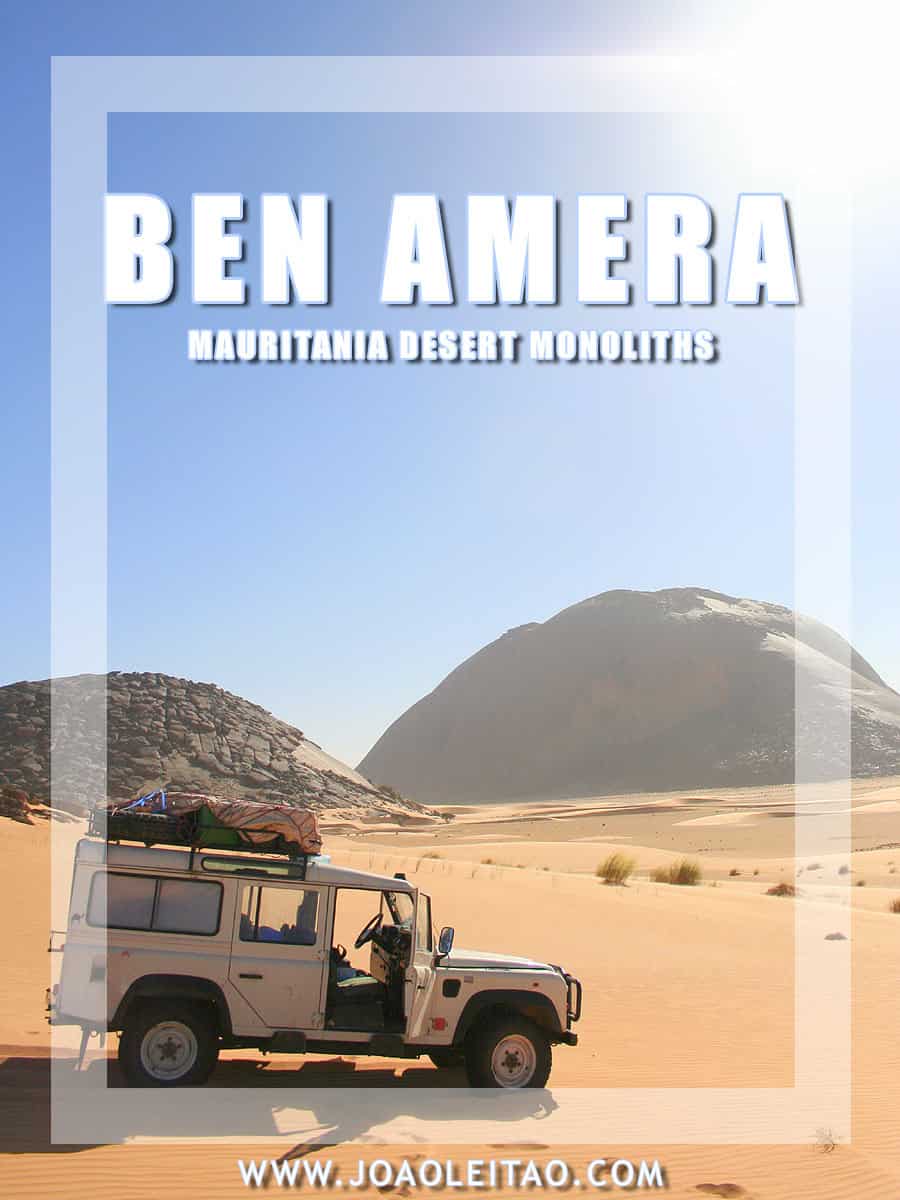
The mighty void of Sahara Desert reveals interesting facts and fascinating legends. 4 km / 2.4 mi from a little desert village on the railway stretch from Nouadhibou to Zouerate, we can spot an enormous mass of dark rock belonging to Ben Amera monolith, rising up to 633 m / 2076 ft.
Totally controlling the desert skyline, Ben Amera is the biggest monolith in Africa. Other smaller size monoliths can be seen nearby.
To get to Ben Amera, there is no road. You have to get a 4WD and drive from Nouadhibou to Choum, on a two-day desert adventure.
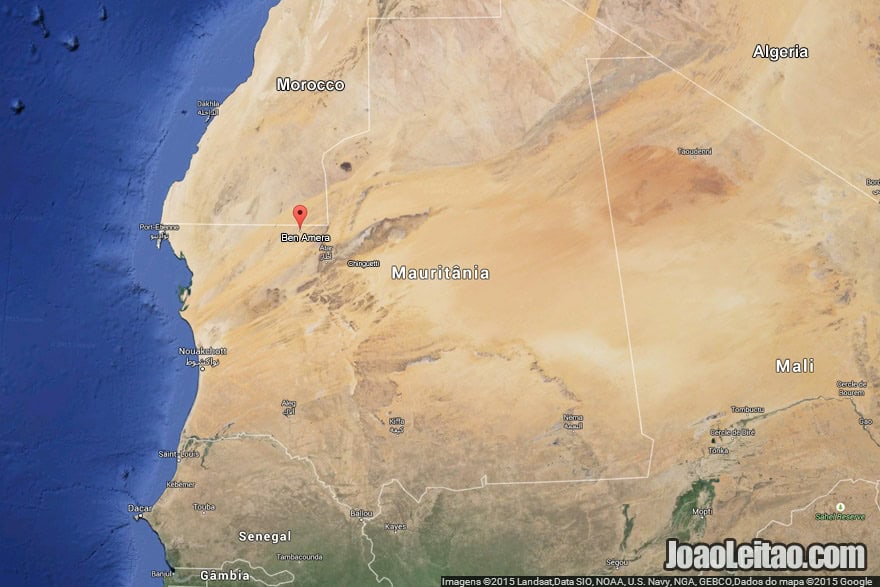
A natural monolith is a large block of stone, consisting of a single element – most times being confused with a mountain. There are only 2 bigger monoliths in the world after Ben Amera, the monolith Uluru and Mount Augustus, both located in Australia.
Ben Amera is surrounded by dunes, and the contrast effect on the landscape is breathtaking.
Throughout time, these huge rocks became very useful to sub-Saharan African traders, crossing the desert with camel caravans from Djenee in Mali, all the way to Morocco. When local people set fires, the light reflected on the rock, guiding travelers in the right direction amidst the dark Sahara Desert nights.
5 km / 3.1 mi away from Ben Amera lies another monolith. Ben Aicha, the ex-wife of Ben Amera – says local legend. It seems folk stories report that the destiny of those two rocks is the same as of humans.
Legend says that, at the beginning of times, Ben Amara – the monolith, was married to one of his relatives, Aicha. These two monoliths were once a single block of stone.
When returning from a trip, Ben Amera surprised Ben Aicha in the arms of her lover. Enraged, he kicked her away – keeping their siblings close to him. So, today, you’ll see two small stone blocks alongside the imposing Ben Amera monolith. Ben Aicha is left alone with her maid, condemned to observe from afar her angry ex-husband.
I got to Ben Amera coming from Nouadhibou on the Atlantic Coast. It took me almost two days to get there, driving in the desert along the railway through the unstable region of the borderline between Morocco and Mauritania.
During two days we just came across one village called Tmeimichat; all the rest was desert, sand dunes, camel herds and minefields all along the northern part of the railway.
Continuing East after Ben Aicha, we drove to Choum and Atar at 103 km / 64 mi distance. Furthermore, on the way, our goal was to reach the Holy city of Chinguetti.
To make such a trip, we needed to be self-sufficient. While in Noudhibou we packed our Land Cruiser Defender with supplies such as food, water, gas, extra engine battery, and other necessary goods.
We got one day with a sandstorm, and some parts of the way were quite difficult due to extreme desert sand driving. Our 4WD also had a battery problem, so we had to change it somewhere on the way before Tmeimichat.
International Sculpture Symposium
Imagine a forgotten location deep inside the Sahara Desert. Now imagine what it is like to organize an International Sculpture Symposium near Ben Aicha monolith. And that you need a few days to get there by 4WD.
That’s what happened from the 5th of December 1999 until the 9th of January 2000, when 16 international artists got together to promote peace in the world. The event gathered African artists from Burkina and Ivory Coast, as well as from Italy, Belgium, France, Ireland, Canada, USA, Poland, Armenia, Kazakhstan, and China.
The whole event was headed by the famous Burkina Faso sculptor Siriki Ky, who also selected the rest of the artists to join him in this once in a lifetime sculpture symposium in the Sahara Desert.
During more than one month, artists worked to create several interesting pieces of art, meant to be lost in time and space, in the desert. It was an unusual collaboration of man vs. nature – stone. I came across these sculptures by chance, as I didn’t know they existed. What a surprise when we got to Ben Aicha and found art.

